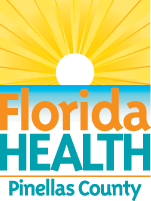It's a New Day in Public Health.
The Florida Department of Health works to protect, promote, and improve the health of all people in Florida through integrated state, county, and community efforts.
Agency Officials Offer Tips on Staying Healthy When Red Tide is Present
April 15, 2016
Tallahassee, Fla. — The Florida Department of Health, in partnership with the Florida Fish and Wildlife Conservation Commission (FWC), Mote Marine Laboratory, University of South Florida (USF) and the National Oceanographic and Atmospheric Administration (NOAA), encourages residents and visitors to stay informed about the current Florida red tide bloom and continue enjoying activities along the southwest coast of Florida.
Red tide is a naturally occurring, higher-than-normal concentration of microscopic algae. In Florida, the species that causes most red tides is Karenia brevis. This organism produces toxins that can affect the central nervous system of fish and marine mammals. As red tide blooms approach coastal areas, white caps and breaking waves can cause their toxins to become mixed with airborne sea spray that may be blown onshore, leading to respiratory irritation in people. Toxins can accumulate in shellfish (clams, oysters, mussels) and result in illnesses if contaminated shellfish are consumed. Shellfish harvesting areas are closed to commercial and recreational harvesting when blooms are present. Seafood from grocery stores, restaurants and hotels is monitored and is safe to eat.
Our agency partners work diligently to monitor our Gulf coast for red tide, including the current bloom located along southwest Florida. The NOAA Harmful Algal Bloom forecast predicts impacts from red tide each week for Florida coastal counties near blooms. There currently is potential for respiratory irritation in areas of Charlotte, Manatee, Pinellas and Sarasota counties.
The department encourages everyone to consider these tips to stay safe and healthy while enjoying Florida’s beaches:
- In a red tide area, people may experience varying degrees of eye, nose and throat irritation. When a person leaves an area with a red tide, symptoms typically go away;
- People with severe or chronic respiratory conditions, such as asthma or chronic lung disease, are cautioned to avoid areas with active red tides;
- While swimming is safe for most people, red tide has the potential to cause some people skin and eye irritation;
- In some red tides, dead fish wash ashore. Beachgoers are advised to avoid swimming in water where dead fish are present;
- The harvesting of distressed or dead animals is not advised under any circumstances; and
- Pet owners are advised that red tide poses a risk to animals brought to the beach. If a pet swims in a red tide patch at the beach, rinse off its fur and paws as soon as possible with fresh water. Also, do not let pets eat fish or drink water from the red tide.
There are many resources available for additional information on red tide:
Visit the FWC website for updated red tide status reports, to track blooms or to learn more about red tide at MyFWC.com/RedTide. FWC and Mote Marine Laboratory together host a Facebook page dedicated to sharing information about Florida red tide and other harmful algal blooms at www.facebook.com/flhabs.
For additional information on red tide and beach safety, please visit the Florida Department of Health: https://www.floridahealth.gov/environmental-health/aquatic-toxins/index.html.
Access Mote Marine Laboratory's beach conditions report at http://visitbeaches.org.
For information on safe harvesting of shellfish in an area, visit the Florida Department of Agriculture and Consumer Services, Division of Aquaculture website at http://www.freshfromflorida.com/Divisions-Offices/Aquaculture/Shellfish-Harvesting-AreaClassification/Harvesting-Management.
The College of Marine Science at USF, in partnership with FWC, provides bloom tracking information through the USF Collaboration for the Prediction of Red Tides (CPR) at http://ocgweb.marine.usf.edu/hab_tracking/HAB_trajectories.html. Note that tracking information is provided both at the surface and near bottom because it is recognized that red tide tends to be transported to the near shore along the bottom.
To report illnesses from exposure to red tide, please call the Florida Poison Information Center at 1-800-222-1222.
To report fish kills to the FWC, contact the Fish Kill Hotline at 800-636-0511 or submit a report online.
About the Florida Department of Health
The department, nationally accredited by the Public Health Accreditation Board, works to protect, promote and improve the health of all people in Florida through integrated state, county and community efforts.
Follow us on Twitter at @HealthyFla and on Facebook. For more information about the Florida Department of Health please visit www.FloridaHealth.gov.
For Media Inquiries
@HealthyPinellas
@HealthyFla





Connect with DOH